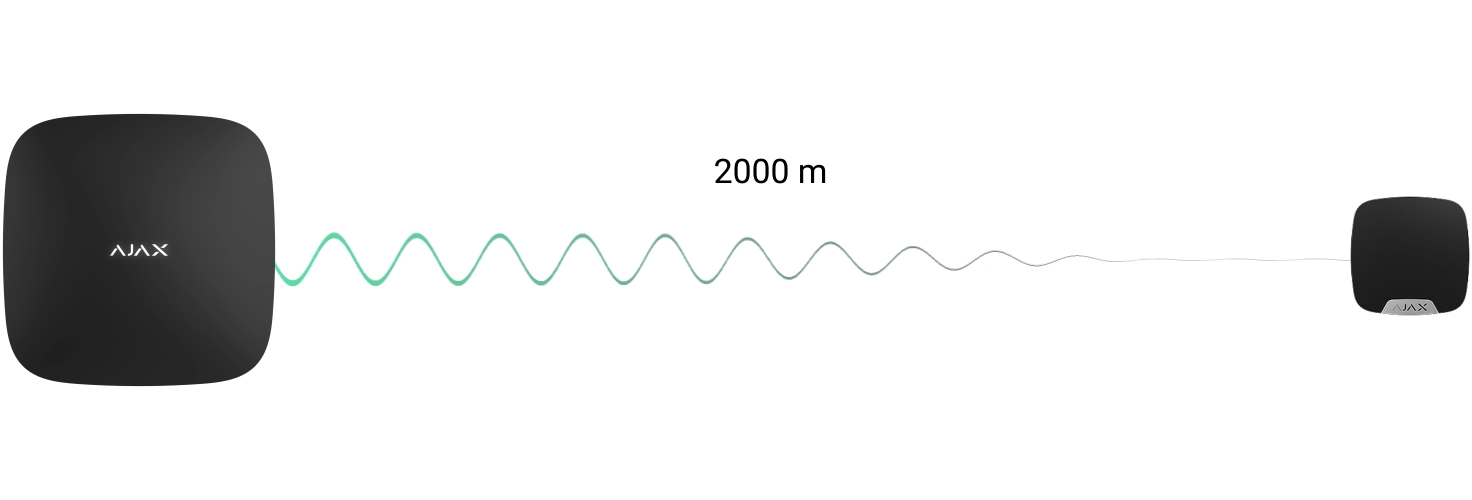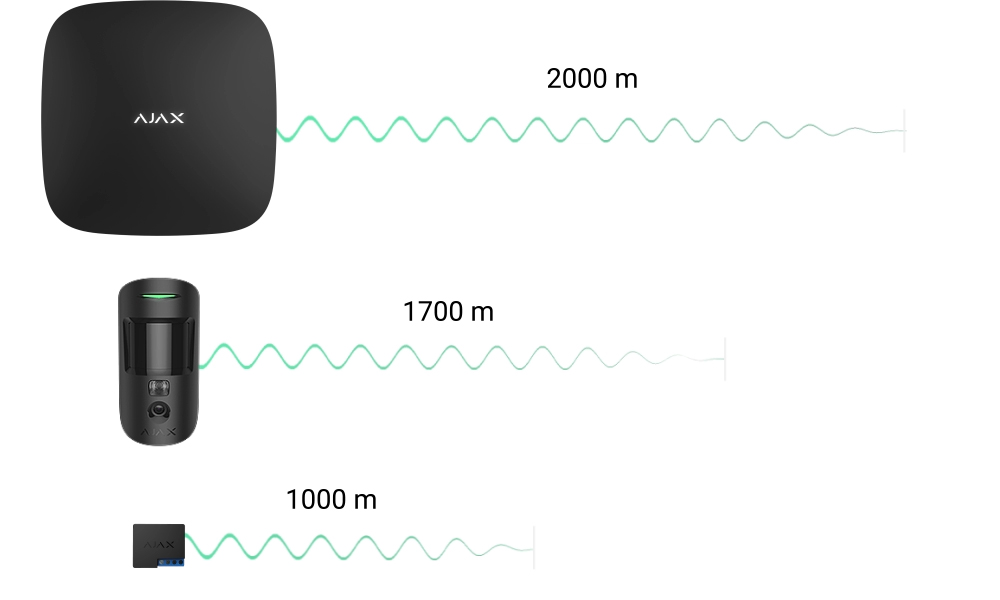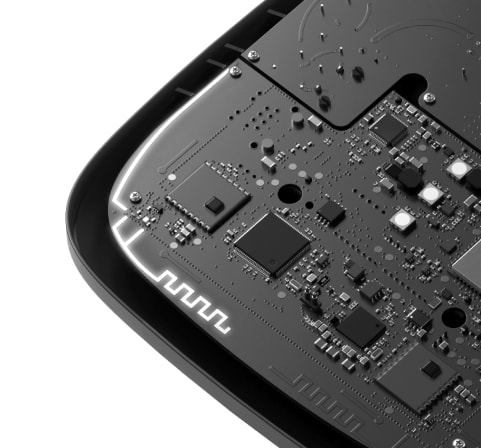
Radio communication range

Maximum range

Factors affecting the radio communication range
Effect of obstacle material on a radio signal
Low signal absorption coefficient — up to 3 dB
-
Dry red brick 90 mm thick
-
Gypsum board 100 mm thick
-
Dry wood 80 mm thick
-
Glass 15 mm thick
Average signal absorption coefficient — 5-20 dB
-
Brick 250 mm thick
-
Breeze block 200 mm thick
-
Concrete 100 mm thick
-
Masonry 200 mm thick
More than 20 dB. Signal absorption coefficient
-
Concrete 300 mm thick
-
Reinforced concrete 200 mm thick
-
Aluminum and steel beams
-
Large aquarium filled with water
Obstacles reflecting signals
Signal strength decrease to 10%


Calculating the radio communication range of Ajax devices
No theory — just practical trials with devices from retail distribution. The trials are carried out at a test site with minimum radio noise and favorable weather conditions: a constant exchange of data between the hub and the device is maintained, with the distance between them gradually increasing. As soon as the hub ceases to acknowledge the reception of events, the communication range is recorded. After confirming the value with several tests, the device is assigned the "communication range" characteristic.
This is an industry-standard approach to communication range determination required to compare devices within the same manufacturer's product line and competing solutions from different manufacturers.
Why Ajax devices have different radio communication ranges



How the reliability of radio communication in Ajax systems is ensured
Multi-directional antennas
An Ajax hub/range extender has two multi-directional antennas for Jeweller frequencies oriented 90 degrees relative to one another.
Hubs with photo verification support have dedicated antennas for Wings frequencies. They are also oriented at an angle of 90 degrees relative to one another.
Low noise boards

Event delivery confirmation
Adjustable pings of devices


Radio frequency hopping

Automatic power adjustment of the radio transmitter
Ajax radio communication range calculator
Jeweller
Wings



































